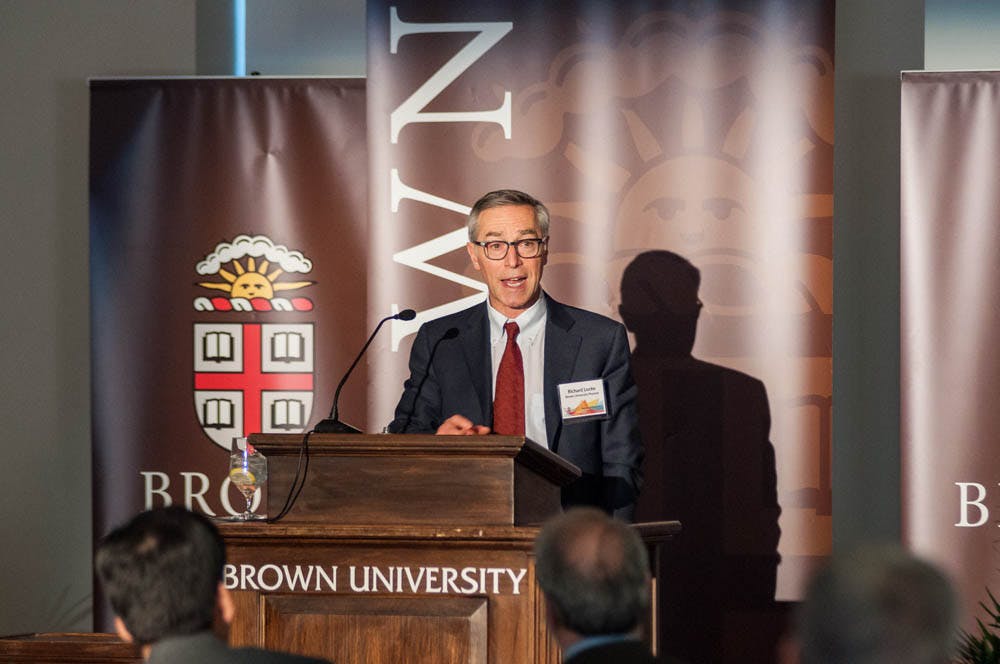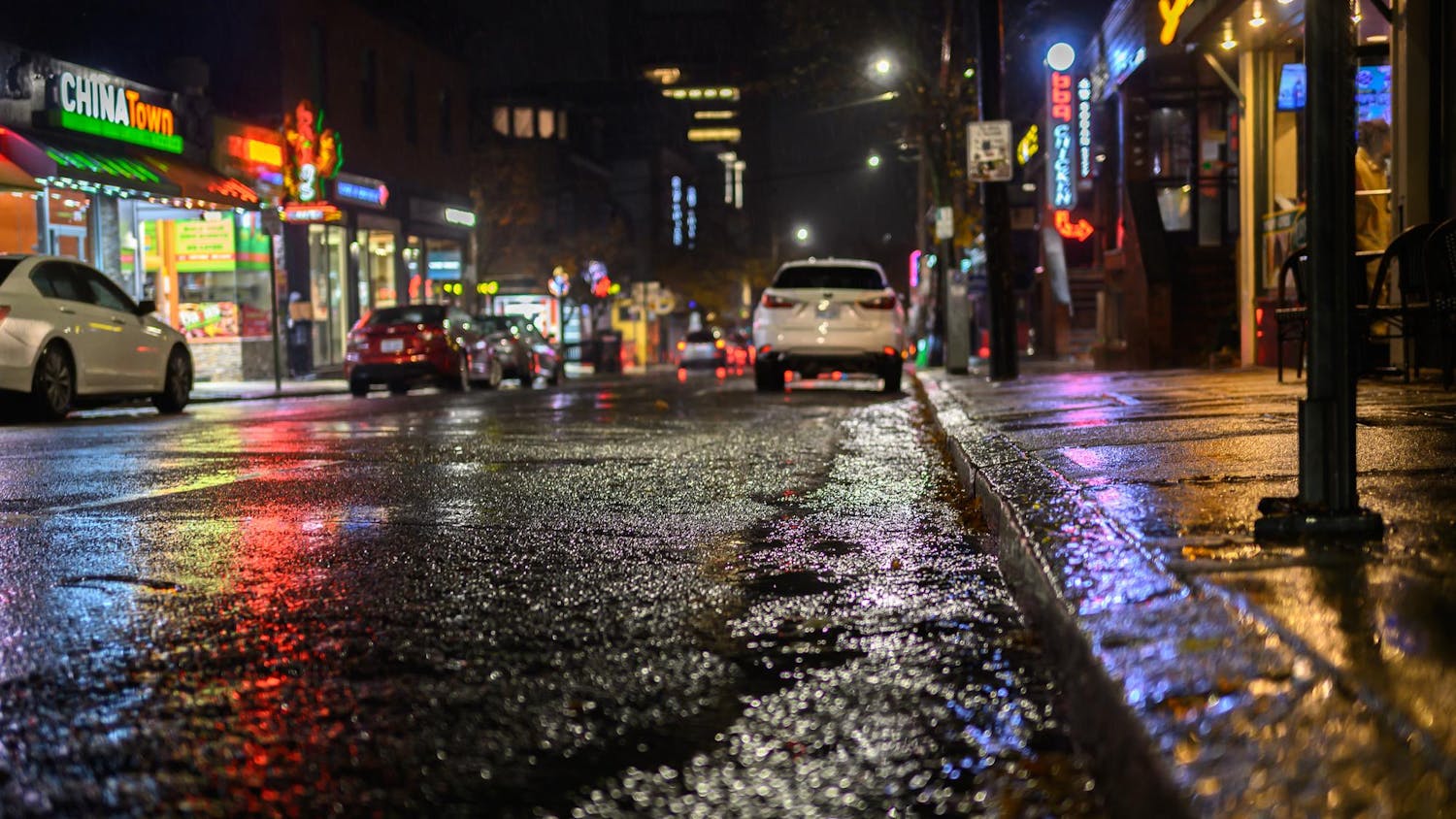After releasing its first annual report on the Diversity and Inclusion Action Plan, the University hosted its biennial National Diversity Summit this weekend featuring a series of panels and breakout sessions designed to relay the importance of diversity and inclusion in higher education.
Organized by the Office of Institutional Diversity and Inclusion, the summit, which launched in 2015, is an “opportunity to learn from and in collaboration with colleagues from our peer institutions,” wrote Liza Cariaga-Lo, vice president for academic development, diversity and inclusion, in an email to The Herald.
The summit was open to all members of the Brown community and featured keynote speakers who spoke on topics ranging from the college admissions process to white fragility.
At one of the summit’s plenary sessions, Natasha Warikoo PhD ’95, an associate professor of education at Harvard, spoke about the research she conducted for her book The Diversity Bargain: And Other Dilemmas of Race, Admissions and Meritocracy at Elite Universities, which examines how Ivy League and Oxford students perceive meritocracy and race. “We see inequality in the outcomes of admissions, and, yet, there are … signals that students get that this is a meritocratic system, ” Warikoo said.
Warikoo said that the Ivy League students she interviewed for her research viewed efforts to increase diversity, through programs like affirmative action, as a mechanism to increase the collective merit of their class cohort. A white student Warikoo spoke with believed that diversity added as much to the class as a student who was a world class piano player. This perception was a “problematic commodification of race and ethnicity for black and Latino students in the minds of their peers,” she said.
Ultimately, Warikoo said that the diversity bargain was that “white students support affirmative action because it leads to personal benefits.” Citing other student interviews, Warikoo said that there were several implications attached to the bargain. White students expressed a fear of “reverse discrimination” and a fear that “affirmative action shouldn’t go too far.” The program “shouldn’t call into question … white privilege and should be about benefitting (the University) rather than restorative justice,” she added.
While Warikoo acknowledged that “we’re never going to have a … completely level playing field,” she said that universities ought to have a broader support system for underrepresented students.
Alexandra Ocampo Carr ’06, vice president of the Brown University Latino Alumni Council, said that Warikoo’s lecture highlighted the fact that diversity in admissions is meant “to move the country along in terms of justice.”
“We use blanket statements like meritocracy,” but the word is used with an underlying assumption of “all things being equal — but all things aren’t equal,” she added.
In addition to the keynote addresses, the summit allowed visitors the opportunity to attend a series of breakout sessions covering topics ranging from Muslim identity to the role of technology in developing inclusive communities.
Summit topics “were selected given feedback we received from departments and constituent groups across Brown who were asking for research and evidence-based practices and policies related to their departmental DIAPs,” Cariaga-Lo wrote.
Archana Sridhar, the associate provost of the University of Toronto, spoke at the session titled “Cultivating Talent in the Professoriate: Faculty Development and Mentoring.” Sridhar told The Herald that she had spoken with Cariaga-Lo, who had “helped (us) think about (implementing our own) diversity initiatives” at the University of Toronto.
Cariaga-Lo had invited Sridhar to participate at the summit a few weeks earlier, she added. “It was really exciting to hear all the innovations and diversity work going on at other places and (have the opportunity to) bring those ideas back to our institutions,” Sridhar said.
Anthony Jack, an assistant professor at Harvard, led a session titled after his book, “(No) Harm in Asking: Class, Acquired Cultural Capital and Academic Engagement at an Elite University,” which assessed how students from different socioeconomic backgrounds engaged with their professors.
To determine the extent to which students felt comfortable asking their professors for help, Jack separated students from low-income backgrounds into two groups: the privileged poor and doubly disadvantaged. The privileged poor consisted of low-income students who attended reputable schools prior to college, while the doubly disadvantaged group consisted of low-income students who did not attend a reputable school to prepare them for higher education.
From his research, Jack compared levels of professorial engagement among low-income black, Latino and white students. Students who came from the privileged poor had “no qualms about asking for help” or attending their professor’s office hours, he said. Comparatively, those who fell in the doubly disadvantaged category struggled with self-advocacy, which negatively affected their ability to succeed.
“Middle class (students) see college officials as partners along their academic journey, but the doubly disadvantaged, I argue, see college officials as authority figures and treat them as such,” Jack said. This not only leads these students to “draw boundaries” but also keep distance between themselves and their professors, he added. In contrast, the privileged poor viewed officials as “facilitators” who can offer them support.
Jack also found that students from low-income backgrounds perceived attending office hours as a “rich person” thing to do.
Jack stressed that professors needed to be more explicit about what office hours entail to encourage students from all backgrounds to attend. “Impress upon students that it’s more than normal to ask for help, and it is smart, expected and rewarding. Inspire them to build intergenerational networks. … Find ways to educate all families that there are new rules and their children must adapt to them,” he said.
Carr said that Jack’s session “resonated (with me) because I am one of the (doubly disadvantaged).” Thinking back to when she was a student, she “didn’t realize that use of (the University’s resources) was not a signifier of my incompetence or lack of intelligence but, in fact, use of them would have been a ladder to my success.”
The summit allowed attendees to reflect on Brown’s history of diversity and inclusion.
Jennifer Davis-Allison ’73, who came to the conference to reunite with her freshman-year roommate, Aneesah Ali ’ 73, said that the work of student activists plays a huge role in allowing the University to advance with regard to diversity and inclusion. The students in 1968 provided the “impetus” for the University to admit more students of color. “The culture here (has always been) of activism,” she said.
“The thing that stood out for me and really solidified the value of the Brown experience was under Ruth Simmons with the Slavery and Justice project, which included alumni,” Ali added. “That was the lead and the centerpiece in the chronicle of higher education … (because) now, 15 years later, the other institutions are doing their own reconciliation work.”





